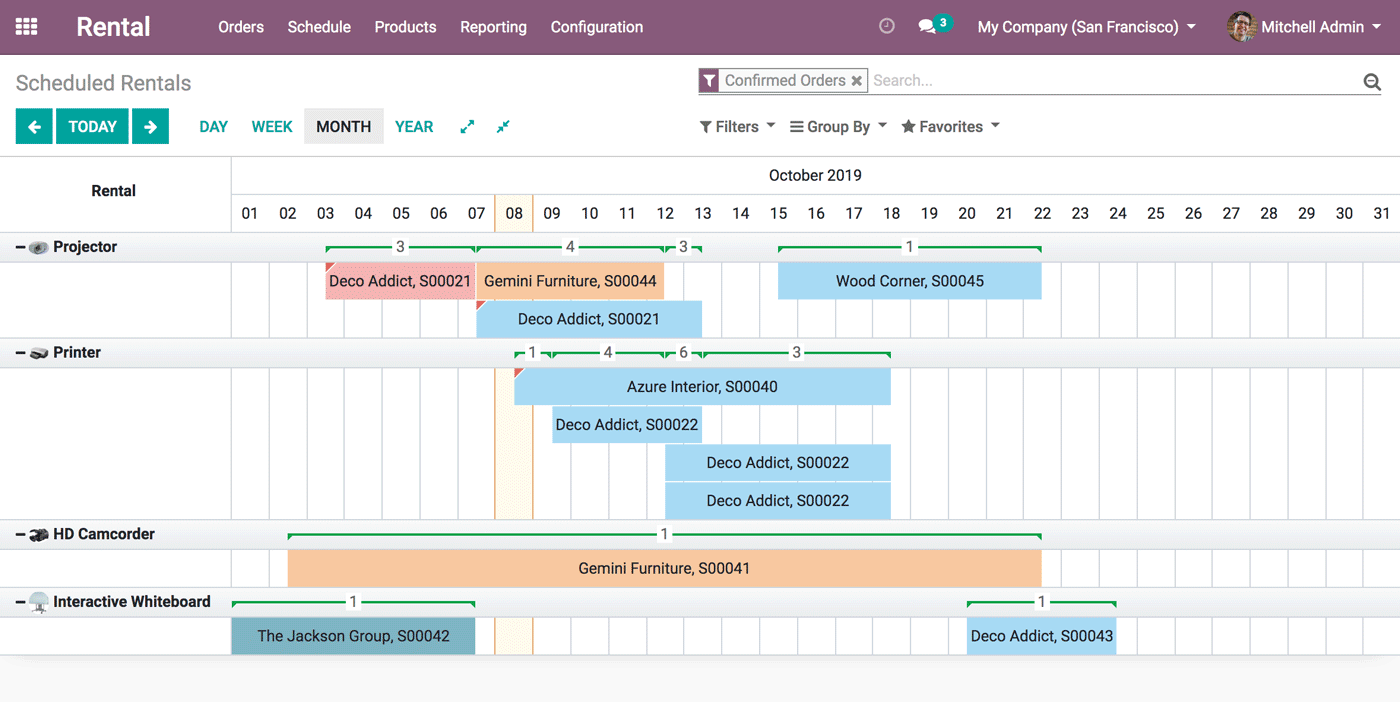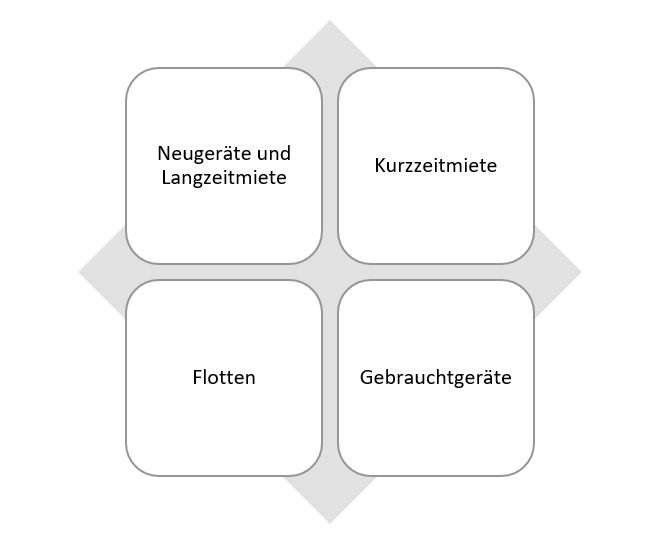The Forklift market
The market for forklift rental and new equipment is characterised by fierce cut-throat competition, which is being tackled by the respective suppliers using various strategies.
Particularly in the rental business, customers expect flexibility and reliability from providers in combination with low prices in line with the market.
Different business areas have different but complex requirements. For example, every second counts in forklift rental. If the customer has a equipment failure, the supplier who can competently offer the fastest solution is awarded the contract. In the new equipment business, it is important to time all necessary resources accordingly to create the best experience for the customer (forklifts with the right attachments should be at the customer's site at the right time and the representative should be informed).
Precisely in these situations it is necessary to be able to rely on a command centre that displays and processes all necessary information clearly and in (almost) real time. Nevertheless, many companies worldwide continue to use different - non-interacting - tools for availability queries (stock levels), quotations, accounting, scheduling and maintenance.
This requires more staff, makes the business slow, opaque and the customer experience suffers.
The ideal process
Let's take a look at the ideal process using the example of a forklift rental:
- Customer calls or inquires online about an available device type for the respective requirements
- An automated debitor check as well as an availability check for all locations of the provider is carried out. At the same time, maintenance plans and other deadlines for all devices are included in order to control availability over the period. A transport cost calculation is carried out for all available equipment and the best equipment is suggested at the most favourable conditions with the lowest transport costs. At the same time, different variants are calculated which can be presented to the customer (express deliveries, cross-selling, up-selling, etc.)
- The customer chooses the offer that best suits the company's ideas
- Now a series of automated process steps should take place again:
- Information of all stakeholders involved:
- The customer is informed about the accepted order
- The workshop or warehouse is informed of the imminent warehouse exit
- The account manager is informed about the new order of the customer
- The logistics partner is informed about the upcoming transport
- All documents must be generated (takeover protocols, delivery notes, CMR, HAZMAT documents)
- Reservation of the equipment in the system
- During the rental period, the IoT data of the equipment could be checked to guarantee the lowest possible probability of failure for the customer and to detect inappropriate use
- Information must be exchanged again with all stakeholders for the collection of the equipment
- As soon as the equipment is returned, delivery documents should be automatically visible in the system. The billing run should be triggered automatically. Damages and other services should be billed separately, the document data should be transferred to Accounting, and the rental should be included in statistics.
As can be seen in this short (and certainly incomplete) process, many process steps are necessary to handly a forklift rental, which - if done manually - take up a large number of personnel resources.
Why Odoo?
With Odoo it is possible to automate or semi-automate the process outlined above, but also all other processes depending on the expansion stage.
The advantage is that Odoo has been developed by thousands of developers and comes with a powerful set of modules. Extensions, which are necessary especially for the forklift industry, can be set up economically and efficiently and integrated effortlessly.

Advantages of Odoo for the forklift industry summarized:
- Significantly faster ROI (Return on Investment) than with comparable ERP systems
- Finished modules for processing new, rental, fleet and used equipment business
- Possibility to generate USPs by integrating individual modules that optimize processes in customer contact
- Thanks to the open source approach, new features can be implemented in extremely short time and any necessary bug fixes can be carried out by the inhouse IT team within minutes
- No installation effort, since Odoo is browser-based and can be accessed from any web-enabled device with an up-to-date browser
- (Controlled) access to the system by the field service possible, in order to query important customer information while on the road
- Integration with other legacy systems possible (a variety of ready-to-use interfaces is already available)
- Odoo can be fully integrated with logistics service providers. Thus, a bidirectional data exchange can take place within seconds and additional e-mails are not necessary. For Austria we can already offer a fully implemented interface to the forwarding agency Pircher & Pircher , which allows to export oder data and additionally returns information from the forwarding agency (delivery notes, actual times, planned times, goods transferee, ...).
The following video shows a possible process flow for a rental with Odoo:
The implementation period of the software depends on the size of the company, the number of users, the scope of integration and the available resources on the customer side. In principle, however, one can say that implementation can be completed within a maximum of 6 months, even in large companies, as can be seen in the example of Toyota Material Handling France.
Odoo is already being used successfully there. You can find the corresponding case study under the following link: How Toyota uses Odoo after just 6 months of integration
Additional competitive advantages in the field service
Networking between scheduling, billing and technicians is also important in field service. Due to Odoo's modular system, the app "Field Service" can be docked, which enables the management of field service tasks (forklift maintenance, repair, etc.). The following video gives a short presentation of this module:
What competitive advantages are there in the end?
Thanks to the flexible architecture of Odoo, there are no limits to creativity in terms of competitive advantages. In principle, however, we see the following aspects as opportunities for competitive advantage:
- More efficient and therefore cheaper and faster order processing
- More transparency for better corporate mangement
- Error avoidance through reduction of manual media breaks (e.g. direct interface to the forwarding agent) - resulting in increased customer satisfaction
- Possibility to create individual customer portals that give customers an overview of rentals, fleets etc.
Would you like to see Odoo in action with our modules especially for the forklift industry? We would be pleased if we could present the software to you personally.

